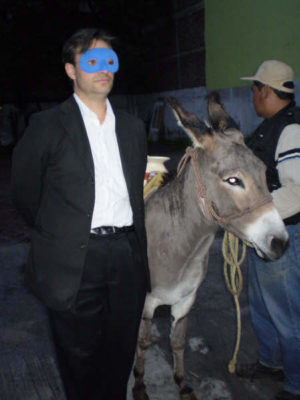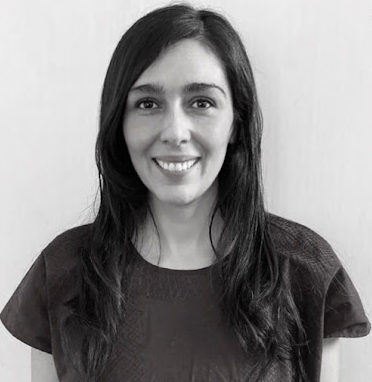Search
To search for an exact match, type the word or phrase you want in quotation marks.
A*DESK has been offering since 2002 contents about criticism and contemporary art. A*DESK has become consolidated thanks to all those who have believed in the project, all those who have followed us, debating, participating and collaborating. Many people have collaborated with A*DESK, and continue to do so. Their efforts, knowledge and belief in the project are what make it grow internationally. At A*DESK we have also generated work for over one hundred professionals in culture, from small collaborations with reviews and classes, to more prolonged and intense collaborations.
At A*DESK we believe in the need for free and universal access to culture and knowledge. We want to carry on being independent, remaining open to more ideas and opinions. If you believe in A*DESK, we need your backing to be able to continue. You can now participate in the project by supporting it. You can choose how much you want to contribute to the project.
You can decide how much you want to bring to the project.

What are the implications of defending pedagogical practices of museums as research? What political agencies do these investigations mobilize and what epistemological powers do they unleash? Why, how and what can we research? Can transpedagogies reinvent the production and circulation methodologies of knowledge in museums?
The ideas that follow will describe different facets of pedagogical research in contemporary art museums, taking as a starting point the notion of transpedagogies conceptualized by the artist Pablo Helguera [1]Pablo Helguera lives and works between New York and Latin America, particularly Mexico. His artistic practice encompasses various media and languages, such as installation, sculpture, photography, … Continue reading (Mexico City, 1971), in order to test some research capacities of our work. As the result of a series of educational experiences [2]For several years he was director of the adult education program at the Museum of Modern Art in New York (MoMA). Between 1998 and 2005, he was also head of public programs in the area of … Continue reading and long-term research, in 2011 the artist Pablo Helguera published Education for Socially Engaged Art and Pedagogy in an Expanded Field, an anthology of texts for the Mediators Training Course of the 8th Mercosur Biennial. In the second book, he proposed the term Transpedagogies [3] He had previously used this concept in “Notes Towards a Transpedagogy” (2010) in the book Art, Architecture and Pedagogy: Experiments in Learning, edited by Ken Ehrlich. to describe projects carried out by artists and groups that bring together educational processes and artistic creation in work that provides an experience of epistemic disobedience, different from that of conventional art academies and formal art education. After its introduction in the 8th Mercosur Biennial, this idea inspired curatorial discussions by emphasizing the need to articulate a common denominator for the work of various artists who avoided the definitions usually used to refer to participatory art, and whose art work is the pedagogical process itself:
I regard contemporary art’s correct fascination with education as “pedagogy in an expanded field,” to adapt Rosalind Krauss’ famous description of post-modern sculpture. In the expanded field of art pedagogy, the practice of education is no longer limited to its traditional activities, which is teaching (for artists), knowledge (for art historians and curators), and interpretation (for the general public). Traditional pedagogy does not recognize three things: first, the creativity of the act of educating; second, the fact that the collective construction of an artistic environment, with works of art and ideas, is a collective construction of knowledge; and, third, the fact that knowledge about art does not end with knowledge of the work of art, which is a tool for understanding the world. [4] Helguera, Pablo and Hoff, Monica, eds. Pedagogía en el campo extendido (Pedagogy in the Expanded Field), Brazil: Fundaçao Bienal de Artes Visuais do Mercosul, 2011, p. 155.
In keeping with this perspective, according to which art is not only about itself but also about processes of social exchange and the possibility of envisioning urgent extra-artistic problems, questions of the dimensions of research of the pedagogical practices of museums are framed in a context of institutional policies that have struggled, in various areas, to justify the importance and value of learning processes in museums beyond art, as a political tool, with museological and theoretical arguments, but which have also struggled to open up space for the theoretical, reflective, narrative, and writerly research of their own practice, simultaneously resisting the prevailing logic of quantitative evaluations, precarious labor and the strict bureaucratization of work in museum institutions. How can transpedagogies reinvent the functional modes of traditional education and research and integrate thoughts about art into other disciplines and cultural fields? These struggles within museums’ pedagogical practices have contributed to the agenda of the debates within the field with challenges to the agency of art-educators and the public in institutional governance. Unlike strictly academic research, these are struggles that, in addition to reflecting “on,” also intervene in the power relations within the museum, and involve processes of listening to visitors, establishing itself as a self-critical voice within the institutions that is suspicious of the competence of experts, becomes public, and questions the relevance of the museum and curatorial programs.
Against this background, we can list some dimensions of pedagogical research in contemporary art museums developed by educators-mediators-managers-historians-artists-intellectuals-activists-researchers: those of the horizontal instruments mediation, distribution and exchange of significant learning by trying to dislocate the outdated role between teachers/students and artists/public (1); theoretical vehicles and categories that realize the contemporaneity and emerging and hybrid strategies of art, pedagogy, activism, and research, as in the case of transpedagogies (2); (counter)histories of pedagogical departments in museums and the challenge to official history and genealogies of pedagogical artists, understood as actions to re-politicize memory (3); topics of critical museology and strategies of the reactivation of the social, the tactics of citizen participation and the voices of identities habitually excluded and silenced (4); public studies (5); social impact studies (6); cartographies of projects to unite the networks within the art-educators profession and thus strengthen synergy networks of collaboration with a local and international scope (7); deep explorations of very specific contexts to join forces, certain community tasks of collective responsibility (8); artistic and poetic experiments that question the meaning of pedagogy as art and art as pedagogy (9); transversal tools of knowledge generation that depatriarchalize and decolonize knowledge fossilized by collections and discipline discourses (10), and, of course, many other dimensions absent in these brief lines.
Despite the complexity of the research dimensions described above, traversed by a variety of discipline, epistemological, and methodological frameworks, but also traversed by political, museological, and historical frameworks, there is perhaps a kind of imperceptible thread that links them, namely, the question: why and for whom do we do research? The research that we carry out in museum/art contexts and by means of transpedagogies is less concerned with generating knowledge about art for “spectators” than intervening in different contexts of the public sphere in relation to very precise social problems, using the museum as a public arena in which to discuss the hegemonic imagination imposed as unique and necessary. The field of research in museums, therefore, is susceptible to being expanded and strengthened when conceived of in transpedagogical and contingent terms as a political, critical, and transgressive tool that seeks to create poetic, narrative, mnemic, and theoretical interventions that disrupt our limited ways of doing and learning in common, or simply of looking at the world.
(Images: La fiesta del asno, a transpedagogical project by Pablo Helguera that took place at the Museo Carrillo Gil, 2008).
| ↑1 | Pablo Helguera lives and works between New York and Latin America, particularly Mexico. His artistic practice encompasses various media and languages, such as installation, sculpture, photography, drawing, social practices, pedagogy, and performance. Likewise, he addresses a variety of transversal themes, including pedagogy, sociolinguistics, history, ethnography, memory, and the absurd, in varied formats that include lectures, museum installations, musical performance, and literary fiction, among others. The intersection between his work as a pedagogue and his artistic practice has been constant throughout his career, in which he has experimented with diverse and heterodox formats that include the formation of schools and institutes, conferences, display strategies in museums, performances, musical numbers and literary fiction, among others. |
|---|---|
| ↑2 | For several years he was director of the adult education program at the Museum of Modern Art in New York (MoMA). Between 1998 and 2005, he was also head of public programs in the area of education at the Guggenheim Museum and, in 2011, pedagogical director of the 8th Mercosur Biennial in Porto Alegre, Brazil. |
| ↑3 | He had previously used this concept in “Notes Towards a Transpedagogy” (2010) in the book Art, Architecture and Pedagogy: Experiments in Learning, edited by Ken Ehrlich. |
| ↑4 | Helguera, Pablo and Hoff, Monica, eds. Pedagogía en el campo extendido (Pedagogy in the Expanded Field), Brazil: Fundaçao Bienal de Artes Visuais do Mercosul, 2011, p. 155. |

Mónica Amieva. Researcher at the Instituto de Investigaciones Estéticas, UNAM. She was a pedagogical curator at the Museo Universitario Arte Contemporáneo (MUAC), in the 4th edition of the BBVA Bancomer-MACG Arte Actual Programme and at the Museo Tamayo Arte Contemporáneo where she created the Department of Educational Studies (DEE). He is a founding member of the Plataforma Arte Educación (PAE).
"A desk is a dangerous place from which to watch the world" (John Le Carré)